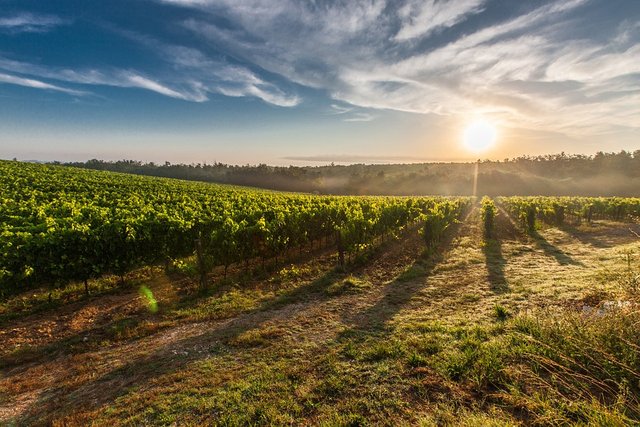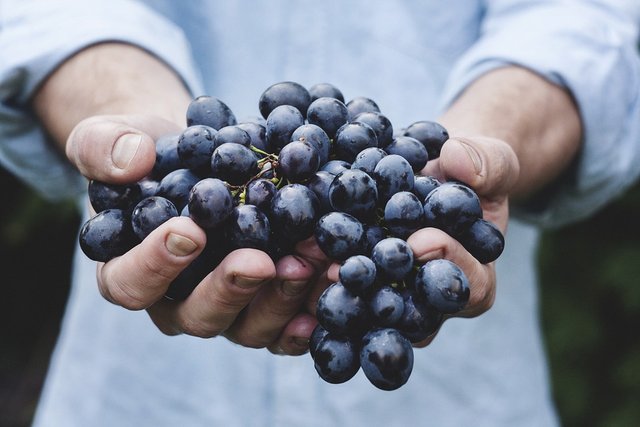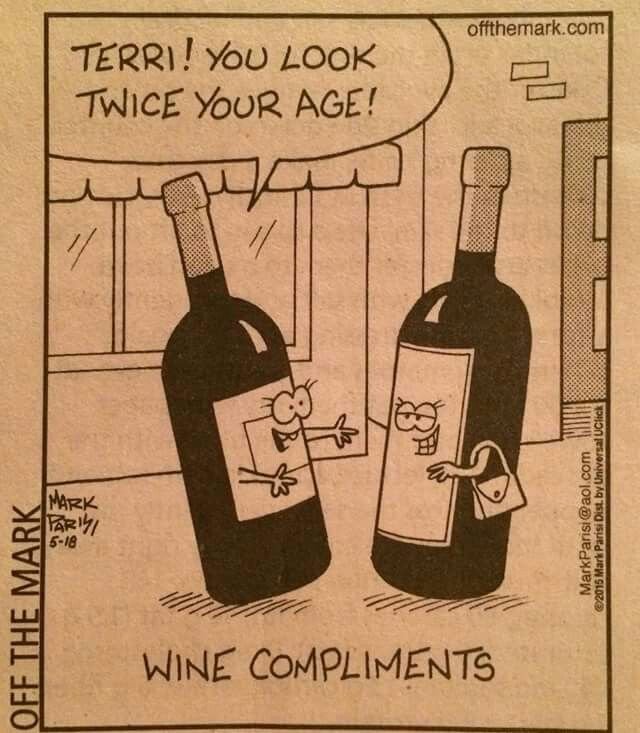How we can use science to make better wine
You know, they say that wine improves with age, it’s so true, in fact the older I get the more I like wine!! 😊

If I tell you the word “wine” you may associate it with images of a sunset caressing the vineyards on the Tuscanian hills (Tuscany is an Italian region famous for its wines), or associate it with the total blackout you got after drinking “few glasses” of wine with friends, maybe I don’t want to know what thoughts I triggered in your mind. Anyway, my point is that we rarely associate wine with science, yet there are several analytical tools we developed in science that could be extremely useful in making better wines. With a few exceptions, winemaking can be very capital-intensive, with very low margins. For this reason, many wineries have limited resources and prefer using cheap and traditional methods to make wine, unfortunately they don’t perform many analyses on their products.
The problem is that even by running several tests on their grapes it would be still hard to predict the quality of the wines they would get, so winemakers prefer to rely on their intuition instead, it’s cheaper than running chemical tests.

I’m assuming you know how wine is made, the juice pressed from the grapes is fermented and yeast turns sugars into ethyl alcohol. So here you have your first predictor of the properties of your wine, the amount of sugars in your grapes and the efficiency of the yeast will determine its alcohol content and its flavor.
Generally speaking, if you grow grapes in cool and wet climates, they will have low concentrations of sugars and also low pH. If pH is too low it can hamper fermentation so your wine will have very little alcohol. Conversely, if you grow grapes in hot and dry weather, you will have plenty of sugar with high pH, yeasts are going to love that and will produce plenty of alcohol, probably too much. Too much alcohol in fact can alter the taste of your wine and a high pH in your grapes could be conducive of bacterial growth in the juices.
It is apparent then that making wine is not that easy, there is no black or white (maybe I should say red or white, but it could be confusing) so you will have to find the right balance.
There are some tests that could be easily run (and more winemakers are starting to use on a regular basis). For example, you could measure the presence of fermentable sugars, the acidity of the juices and the nitrogen concentration (that can be assimilated by the yeast).

Even then, what to do with this data?
Obviously, you can’t make miracles but there are a few tricks you could use to make better wines. For example, if the concentration of sugars is too low, you can add sugars (there are legal limits on how much sugar you are allowed to add).
Or if the acid is too high, you can deacidify your juices by precipitating out tartaric and malic acids, or conversely, if the pH is too high you can add tartaric acid.
If the concentration of nitrogen is too low it could hamper the growth of yeast, so you could add ammonia to boost the nutrient properties of the juices.
You may laugh at this, but wine makers could use analytical techniques we regularly use in science like gas chromatography (GC) and mass spectrometry (MS).
If the juices are contaminated with microbes or insects you want to find it out quick, so you could use GC-MS to screen for metabolites produced by contaminants or even find out if there is something else in the juices that may alter the flavor of the wine.
This may sound a bit like science fiction as wine makers want something quick and cheap, the whole GC-MS business is slow and expensive. However, scientists from the U.S. Department of Agriculture, are working on ways to make wine testing (no tasting) quicker and cheaper. Their aim is that of moving from a sample every 60 minutes to 60 samples a minute. They developed a thin-film polymer capable of extracting volatile compounds from grape macerates and then analyze them using high-throughput MS (Jastrzembski, Bee, & Sacks, 2017). If you are currently a wine maker and you want to test your products during the steps of wine making you would have to ship to the lab lots of grapes or high volumes of liquids, incurring in slow and expensive shipping. With the thin-film approach, their samples would be the size of a postcard and these films were shown to be capable of extracting all the compounds of interest(Jastrzembski et al., 2017).
What about corks?
As I mentioned above, making wine can be a tricky process, and definitely you don’t want to go through all that trouble, age your wine 100 years and then find out that the cork in your bottle messed everything up.

The problem with corks is that it comes from a tree (the cork tree) and in the wood of trees grow fungus. Fungus are like one of the nature’s most creative chemical labs, they came up with all sort of sort of chemicals and they constantly produce new compounds, sometimes they are useful and sometimes not. In this case they are definitely annoying. To eliminate all the microbes, the cork trees are treated with chlorinated phenolic compounds, the problem is that some fungus in the cork tree may respond to this treatment by secreting trichloroanisole (TCA) (Tarasov, Rauhut, & Jung, 2017), this is a compound that will contaminate your wine and give it a bad musty flavor. We call it corcky or corkiness. If you are making a wine worth 1000$ a bottle this is a big deal.
The current way to deal with the problem is to soak corks in a diluted solution of ethanol for 24 hours prior to performing the analysis. This slows everything down and it’s a big pain in the neck for winemakers. But, there is a UK company called Ellutia that developed a custom GC system capable of testing corks in the production line in terms of seconds. So instead of testing corks after 24 hours now they can test a cork every 18 seconds and with extremely high efficiency. The GC system can in fact detect 0.05 ng of TCA per liter, the equilavent of a drop of in 800 swimming pools (https://www.ellutia.com).
Here there is a summary of some of the analytical tests/instruments that can be used for winemaking:
- Measuring alcohol content: we could use a hydrometer, GC-MS, GC-FID, NIR spectroscopy
- Dissolved oxygen: molecular oxygen dissolved in wine could affect its quality and longevity, we can measuring it with a DO meter
- Volatile acidity: bacteria present in wine can produce volatile acids that will result with the formation of acetic acid and ethyl acetate. Tools to measure these are: GC-MS and HPLC
- Turbidity: all the suspended particles that did not dissolve in wine can give it a cloudy and hazy appearance. We could measure it with a turbidity meter
- pH: we mentioned the effect of pH and acidity in the text, we can use a pH meter to measure it
- Degrees Brix: brix is a way to approximately measure the sugar content in grapes and must. Sugars will determine the alcohol content in the wine and we can measure them with a refractomer
- Sulfites: these are common preservatives used in winemaking (I always feel weird when I mention preservatives when talking about food as it means “condoms” in Italian). Anyway, we can measure sulfites using: photometric analyzer, titrator, ion chromatography
My aim was just to show you that if you love science and you like wine, you could definitely make a career in winemaking, in the coming years I imagine that the amount of chemical analyses in vineyards will increase dramatically. Being exposed to wine as a job may not be terrible.
I want to end this post by quoting a wise statement of Napoleon
In victory you deserve Champagne. In defeat, you need it!
References:
- Jastrzembski, J. A., Bee, M. Y., & Sacks, G. L. (2017). Trace-Level Volatile Quantitation by Direct Analysis in Real Time Mass Spectrometry following Headspace Extraction: Optimization and Validation in Grapes. Journal of Agricultural and Food Chemistry, 65(42), 9353–9359. https://doi.org/10.1021/acs.jafc.7b03638
- Tarasov, A., Rauhut, D., & Jung, R. (2017). “Cork taint” responsible compounds. Determination of haloanisoles and halophenols in cork matrix: A review. Talanta, 175, 82–92. https://doi.org/10.1016/j.talanta.2017.07.029
As you might have guessed I come from Italy, everyone knows about some beautiful places in Italy like Venice, Florence, Rome etc..I come from a small region in the south that not many people know about, it's called Basilicata. Instead of paying big companies for ads promoting the region I like the initiative they are pursuing. It's been a few years that instead they invite artists and film-makers and pay for their holiday asking in return to make some clips about their experience in Basilicata. I really like this initiative I would like to support it by sharing some of the videos they posted:

Hey, good summary of wine analysis and variables to watch. I have been using some analytical chemistry instrumentation in the lab for QA/QC of beers for the brewery I am working with. A bit of HPLC, but also GC-MS, so I can corroborate that people are in fact employing these tools to the art and craft of wine and beer making. We typically use it to test new brewing methods, check progress of active or stuck fermentations, and also get an idea of how much of what is in the bottle. For example, using GC-MS to analyze volatile organics like esters, but also terpenes from hops; while the HPLC is employed for the more water-soluble molecules like alpha-acids from hops that impart the bitterness.
Ultimately it's the yeast that makes the finished product, so keeping those critters happy is crucial to getting the right flavor profile, and of course keeping things sterile whenever possible. This is the justification I use for my direction with genetic engineering of brewing yeasts in beer: Since the yeast do most of the work, it makes sense to use them as a platform to customize biosynthesis of normal flavors, novel flavor compounds, as well as to make alterations to carbohydrate metabolism/utilization.
Always glad to see more interest in the scientific end of brewing! We are growing in number!
That's great to hear! You probably know much more than me about it! :) But in my opinion increasing the number of chemical tests we perform when making wine or beer is the way to go
The only real way to know how much of what is in there! Glad to see like-minded folk on this platform. Cheers!
Really good info here ♦♦ I had a friend who studied the art of winemaking at U.C. Davis (California)♦
Sounds like the use of Gas Chromatography can indeed be useful ♦♦ Maybe some winemakers will read this & explore the use of it
Thanks 4 your intelligent input !
I find chemistry /info quite enlightening
This is great information. You really know your topic! I would like to be a vintner in my next life. I actually considered a viticulture degree, but then took another direction in life. Now my education is with glass in hand at wineries wherever I live and travel. 😁
Thank you, I'm a big fan of wine as well and getting into winemaking crossed my mind several times. I think it's never too late! Who knows what the future holds, for now I just enjoy drinking wine and experimenting different combinations of foods to accompany it. As eating food will alter the taste of wine. Wine and cheese is popular, but from where I am from we also make salty snacks called taralli, they are great with wine!
I will have to look up taralli! I have not heard of it. Yes, I agree, it is so fun experimenting with food flavors that pair will with wine. I will admit to a weakness for strong cheese, like aged brie, goat cheese and bleu.
Like Goat cheese, too.
It is FUN to figure what to pair with #wine.
Beautiful article! Very good! 🍇🍷
Cheers :)
so, now grapes look so different for me and i have more knowladge about wine. how i could not appreciate for this content. really thank you @aboutcoolscience
interesting subject but could be summarised !
This is a summary -- and a succinct one at that. It's food science, which requires elaboration on many points, and citations, otherwise the information is without foundation and just more fluff on an already bloated internet. The tags should give an idea of what the author was going for; science and education come to mind.
lol I thought this was already a summary, I left out so many things! :) But I will try to be more concise next time
Resteemed your article. This article was resteemed because you are part of the New Steemians project. You can learn more about it here: https://steemit.com/introduceyourself/@gaman/new-steemians-project-launch